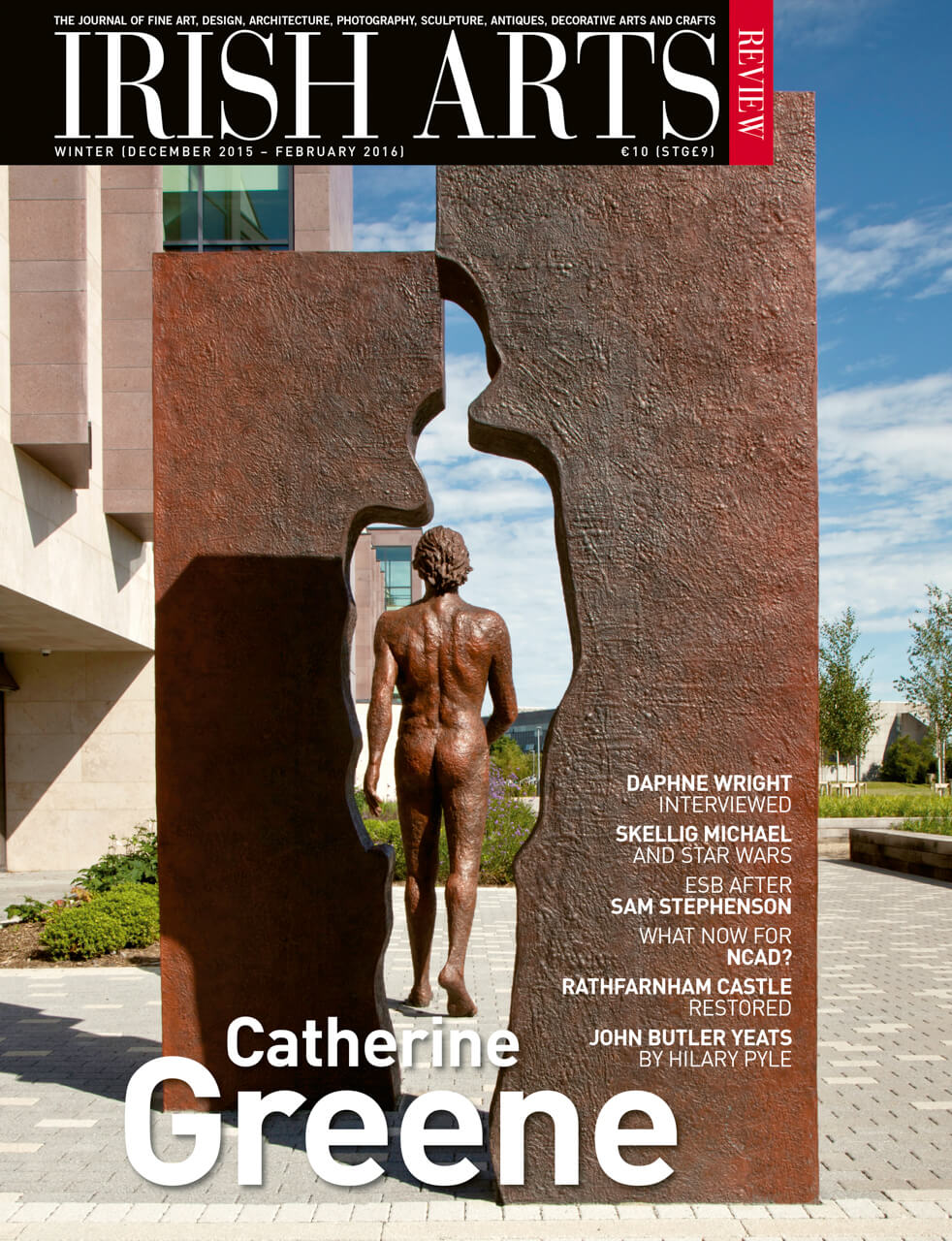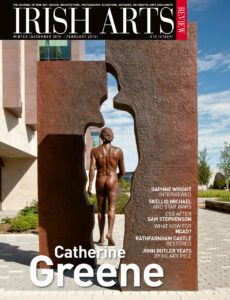

Peter Murray reflects on the cool Nordic aesthetic of Patricia Burns whose work is on view in January at the Taylor Galleries, Dublin.
Reassuringly familiar and yet also distanced and remote, the paintings of Patricia Burns remain in the mind long after the actual images have been viewed. The images she depicts are generally straightforward, but also deceptively simple. A road, shrouded in mist, bends into the distance, the faint outline of telegraph poles marking its curving route. In a suburban housing estate, trees and houses are silhouetted against a pale sky. While these are deceptively normal images, an unsettling mood pervades Burns’ work. These surroundings are familiar, but they are also alien. Points of reference that might reassure, such as cars, people or animals, are rarely included. In the estates, the streets are deserted, while the houses themselves seem on the point of being enveloped by fog. Burns rarely depicts trees in full leaf, more often they are stark outlines, with bare branches reaching upwards, silhouetted against layers of mist.
Nonetheless Burns has an ability to draw, from this apparently simple subject matter, works of art of visual strength and complexity. Her approach is painterly, and she employs a limited colour range, but the tonal values are finely nuanced. There is an emphasis on pale greys, whites, light blues and olive greens, colours that combine together to achieve a wintry, half-light effect. Paint is used more to sketch than to meticulously render, while the principal subject matter, it becomes apparent, is not the structures or trees themselves, but the shimmering envelope of light with which they are surrounded. This veiled but intense sunshine penetrates layers of mist, suffusing houses, fences and street lights with a cold, penetrating light. These are paintings on the cusp of becoming. One moment they are landscapes, the next almost pure abstractions. Thin washes of gauze-like white paint transmute into clouds or floating mist for a few moments, then suddenly become paint again. In their own way, these are joyous works of art, conveying with great skill a sense of what it is like to witness sunlight breaking through early morning mist on a winter’s day.
Having studied at both the Dublin Institute of Technology, from where she graduated in 1986, and the Crawford College of Art in Cork, over the past decade Burns has commuted between these two cities. Her paintings reflect this bi-location, and perhaps some of the emotional intensity in her work is informed by a life that has involved continually arriving, and continually departing. This quality of transience reflects also a political sensibility, in which contemporary society has become a world where people are increasingly on the move. In Ireland’s modern housing estates, neighbours often do not know one another. While they share the same communal spaces, they often lead entirely separate lives.
In 2008 Burns showed her Northside paintings at the Vangard Gallery and two years later she began work on a series of paintings of ‘The Glen’, an area of Cork’s north inner city where a wooded valley has managed to survive amidst the urban encroachment of roads, housing and factories. The resulting Hinterland – The Glen Paintings were shown at Triskel Christchurch, Cork and Garter Lane Arts Centre, Waterford in 2011-12 and an accompanying publication produced by Gandon Editions. In this, the poet Thomas McCarthy responded in his essay on the Hinterlands paintings to their essentially poetic character. He noted that they relate, in ways not readily apparent, to a deep-rooted human need for places of refuge and haven. Yet it would be wrong to consider Burns’ art as sentimental, or nostalgic. In their visual impact her canvases resonate with a cold, clear, haunting intensity, more characteristic of Scandinavian art, music and cinema than of the warm Mediterranean. Her paintings bears comparison with those of Elizabeth Magill and Oliver Comerford, two artists whose work also evokes worlds in a state of becoming, motile yet full of the familiar elements of the everyday. In winter 2014 her first solo exhibition with Taylor Galleries was, appropriately, entitled ‘November Paintings’, and her second solo show with the gallery is scheduled for 2016.
Patricia Burns ‘Winter Group Show’ Taylor Galleries, Dublin
17 December 2015 -30 January 2016.
All images ©The Artist.
Peter Murray is Director of the Crawford Art Gallery, Cork.



